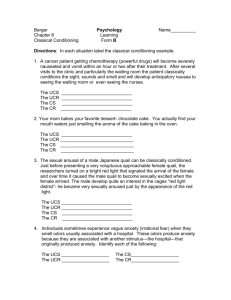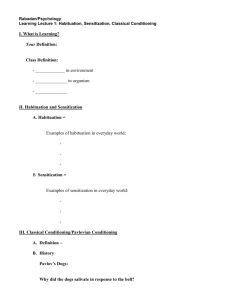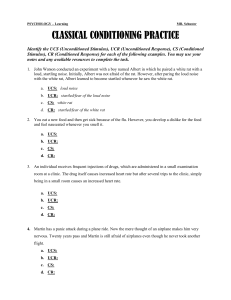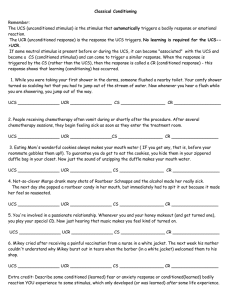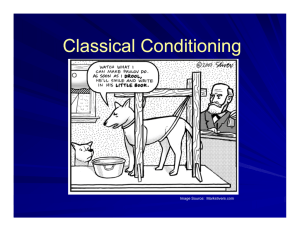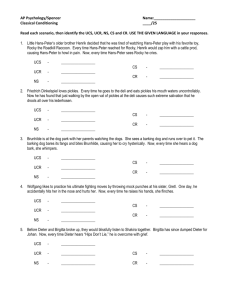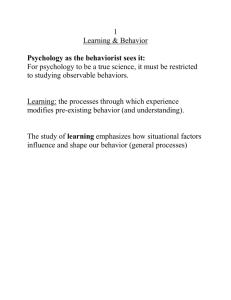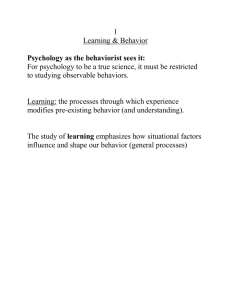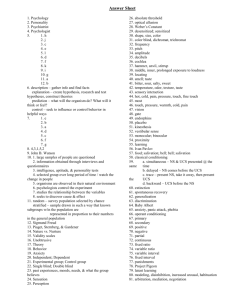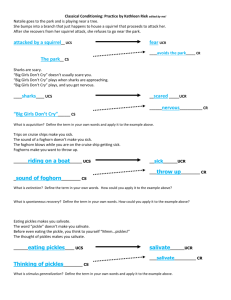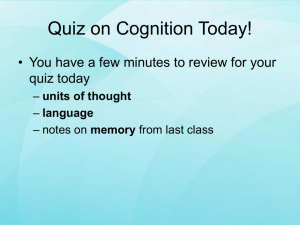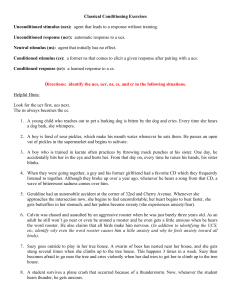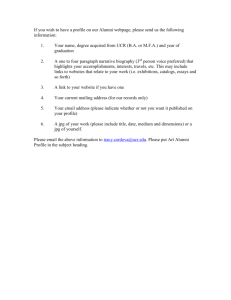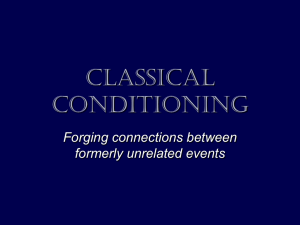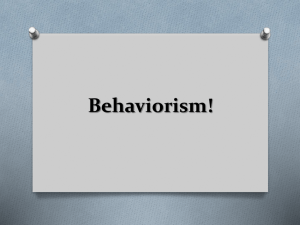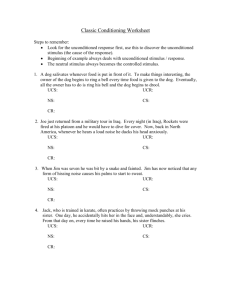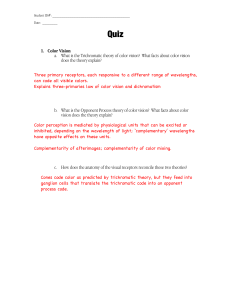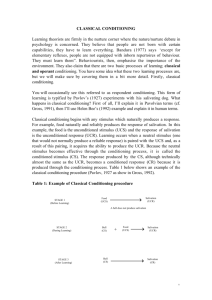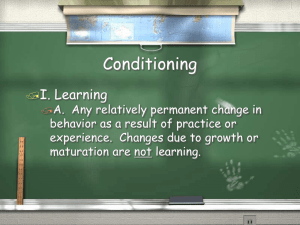Psychology - Monona Grove School District
advertisement
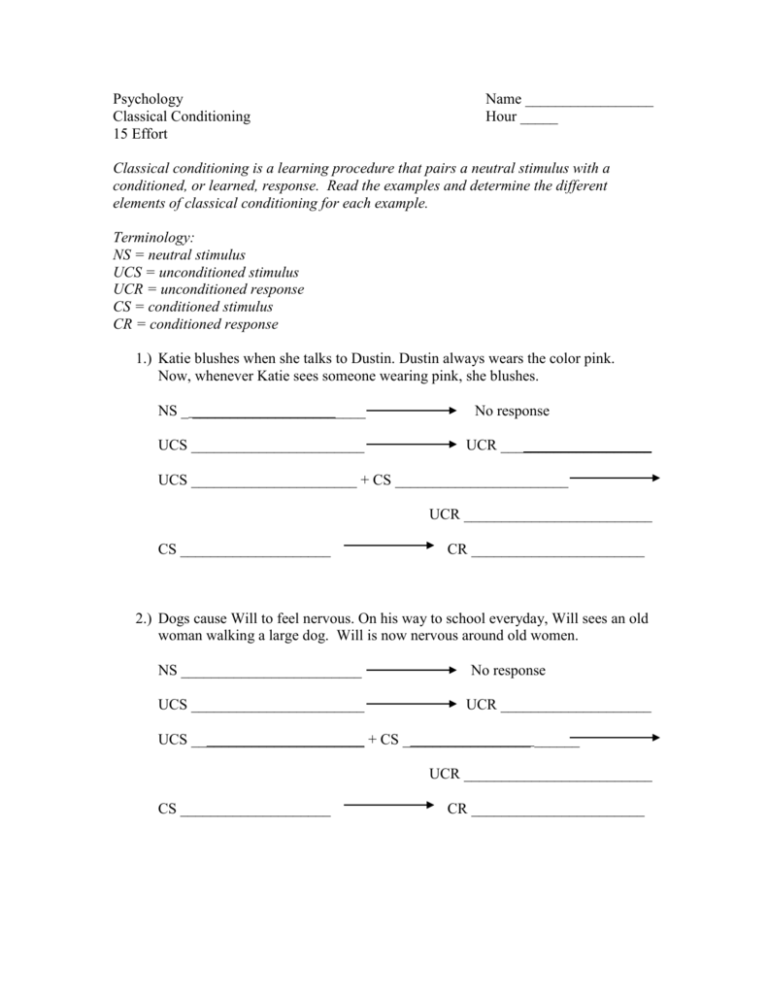
Psychology Classical Conditioning 15 Effort Name _________________ Hour _____ Classical conditioning is a learning procedure that pairs a neutral stimulus with a conditioned, or learned, response. Read the examples and determine the different elements of classical conditioning for each example. Terminology: NS = neutral stimulus UCS = unconditioned stimulus UCR = unconditioned response CS = conditioned stimulus CR = conditioned response 1.) Katie blushes when she talks to Dustin. Dustin always wears the color pink. Now, whenever Katie sees someone wearing pink, she blushes. NS _ _______________________ UCS _______________________ No response UCR ____________________ UCS ______________________ + CS _______________________ UCR _________________________ CS ____________________ CR _______________________ 2.) Dogs cause Will to feel nervous. On his way to school everyday, Will sees an old woman walking a large dog. Will is now nervous around old women. NS ________________________ UCS _______________________ No response UCR ____________________ UCS _______________________ + CS _________________ ______ UCR _________________________ CS ____________________ CR _______________________ 3.) Tera is happy around her boyfriend, who wears a specific brand of cologne everyday. When she smells the cologne, she is happy. NS ________________________ UCS No response UCR ____________________ UCS ______________________ + CS _______________________ UCR _________________________ CS _________________ ____ CR ______________________ Now it is your turn to create your own example. Describe a short conditioned response that you have learned or that you have seen someone else learn. Then define the NS, UCS, UCR, CS, and CR for your example. Finally, make a diagram of how they fit together. Description: NS= UCS= UCR= CS= CR= Diagram:
